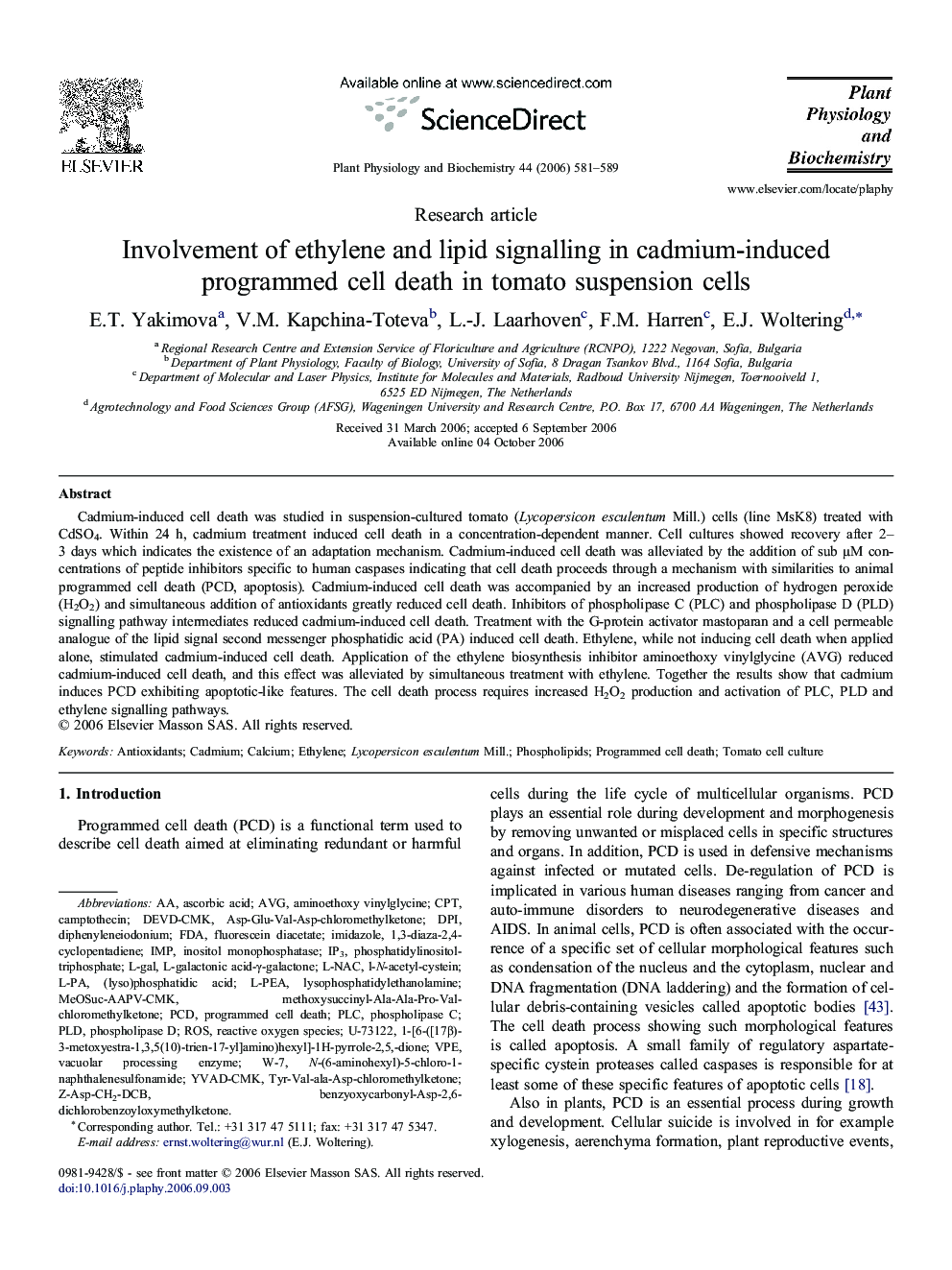| Article ID | Journal | Published Year | Pages | File Type |
|---|---|---|---|---|
| 2016726 | Plant Physiology and Biochemistry | 2006 | 9 Pages |
Cadmium-induced cell death was studied in suspension-cultured tomato (Lycopersicon esculentum Mill.) cells (line MsK8) treated with CdSO4. Within 24 h, cadmium treatment induced cell death in a concentration-dependent manner. Cell cultures showed recovery after 2–3 days which indicates the existence of an adaptation mechanism. Cadmium-induced cell death was alleviated by the addition of sub μM concentrations of peptide inhibitors specific to human caspases indicating that cell death proceeds through a mechanism with similarities to animal programmed cell death (PCD, apoptosis). Cadmium-induced cell death was accompanied by an increased production of hydrogen peroxide (H2O2) and simultaneous addition of antioxidants greatly reduced cell death. Inhibitors of phospholipase C (PLC) and phospholipase D (PLD) signalling pathway intermediates reduced cadmium-induced cell death. Treatment with the G-protein activator mastoparan and a cell permeable analogue of the lipid signal second messenger phosphatidic acid (PA) induced cell death. Ethylene, while not inducing cell death when applied alone, stimulated cadmium-induced cell death. Application of the ethylene biosynthesis inhibitor aminoethoxy vinylglycine (AVG) reduced cadmium-induced cell death, and this effect was alleviated by simultaneous treatment with ethylene. Together the results show that cadmium induces PCD exhibiting apoptotic-like features. The cell death process requires increased H2O2 production and activation of PLC, PLD and ethylene signalling pathways.
